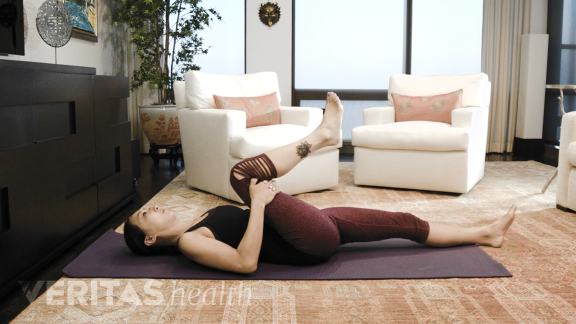 Athletes of all kinds are certainly no strangers to injuries, from learning how to prevent them to managing painful symptoms when they do occur. Lumbar disc injuries can result from participation in any number of sports, in particular collision sports, weight lifting, and gymnastics. Injured discs may herniate causing significant low back pain and radiating leg pain, numbness, tingling, and weakness.
Athletes of all kinds are certainly no strangers to injuries, from learning how to prevent them to managing painful symptoms when they do occur. Lumbar disc injuries can result from participation in any number of sports, in particular collision sports, weight lifting, and gymnastics. Injured discs may herniate causing significant low back pain and radiating leg pain, numbness, tingling, and weakness.
Significant or progressive leg weakness or bowel or bladder dysfunction may result from lumbar disc herniations. These are very serious problems and require emergency care.
Lumbar disc herniations are most common in the working age population, as discs with some age-associated degeneration are more likely to rupture. Fortunately, there are a number of exercises for athletes sidelined with herniated discs that can provide relief from pain, aid in a swift recovery, and help them return to their sport.
Looking for the safest, most effective exercises to keep you moving despite a lumbar disc herniation in your spine? This blog post discusses exercises that are best suited for injured athletes experiencing leg pain from herniated discs, who may be planning to undergo a lumbar discectomy.
4 Most Effective Exercises for Herniated Disc Pain Relief
Exercise can play an important part in reducing the symptoms of leading a lumbar disc herniation. Certain physical activities help strengthen muscles and stabilize the spine, ultimately reducing pressure and relieving pain. Your physician may offer specific guidance about pain-free activities and exercises you can do, as well as which ones you should avoid.
The following exercises may effectively relieve painful symptoms caused by a herniated lumbar disc:
Yoga and Stretching
Both simple stretches and stretching programs like yoga and Pilates can improve strength and flexibility. Certain yoga poses1 are more effective for relieving pressure on your sciatic nerve, such as:
 Knee-to-chest pose
Knee-to-chest pose
- Knees-to-chest pose, which helps to stretch out tense muscles in the lower back.
- Bird-dog pose, which helps to strengthen and stretch muscles in your core and lumbar spine.
- Cobra pose, which works out the core muscles and stretches the lower back.
- Reclining hand-to-big-toe pose, which stretches out tight hamstring muscles that can aggravate sciatica symptoms.
Additionally, your physician may provide specific stretches to help relieve your pain and aid in your herniated disc recovery. It’s important to check with your doctor before moving forward with any exercises.
Walking
Even though it may be tempting to lay low and take it easy when you have a herniated disc, staying active is actually much better for your mobility. Staying in bed can cause stiff joints and weak muscles, which are not ideal for an athlete on the mend. Daily walks are an excellent way to exercise with a herniated disc, without putting additional strain on your spine and causing painful symptoms to flare up.
Biking
Non-weight-bearing exercises2 like biking (or “cycling”) stretch and relax tight muscles in the spine without requiring you to support your own body weight. Biking is much less jarring to the spine than many other aerobic activities and can help ease painful herniated disc symptoms. Like any exercise, it’s important to maintain proper form, ensure your bike is optimally sized for you, and adjust the seat and handlebars as necessary.
You can either opt to ride a bicycle or use a stationary bike because both are just as effective at delivering the same pain-relieving results. However, avoid intense fitness classes like spinning because these are much higher impact than regular biking and can cause symptoms to worsen. Also, avoid biking on roads with rough, uneven surfaces, which can cause pain to flare up. Consult your physician about whether a recumbent bike, an upright bike, or even an elliptical machine is right for your situation.
Swimming
Getting in the water is another great activity to take part in during herniated disc recovery. Swimming laps, gentle water aerobics, and walking with resistance in the pool can help to stretch tight muscles and effectively relieve painful herniated disc symptoms—especially because water exercises are lower impact and put less pressure on the spine. With that said, even water exercises should be performed in a slow, controlled manner to avoid exacerbating symptoms or causing further injury to the spine.
Exercises Injured Athletes Should Avoid
Injured athletes should avoid certain exercises3 that have the potential to worsen herniated disc symptoms. For example, high-impact activities like jogging, martial arts, and aerobics can be jarring to the spine and make the pain worse.
Avoid hamstring stretches (with the exception of the reclining hand-to-big-toe yoga pose discussed earlier) because they can cause sciatica symptoms to flare up. Sciatica is the primary symptom associated with disc herniation, so any activities that aggravate the nerve should be avoided during recovery.
Weight training exercises4 like squats, deadlifts, and leg presses are another type of activity that injured athletes should avoid. When performed with poor form or excessive weight, they can cause additional injuries to the spine. Heavy lifting and sudden, repetitive bending can be triggering events5 that aggravate herniated disc pain. It’s also essential to use the appropriate form when you do return to weight training after recovery. This will not only prevent further injury, but also help reduce the risk of painful symptoms cropping up in the future.
In addition, spine rotation activities6 (e.g., lunges with twists) must be performed with extreme caution or avoided completely to minimize high compressive forces on the weakened lumbar disc(s).
Easing Pain to Get Back to the Sports You Love
By doing gentle, low-impact exercises each day, you can ease the pain associated with a herniated lumbar disc. That being said, it’s essential to speak with your doctor to learn which exercises to perform and which to avoid based on your anatomy, level of disc herniation, sport of choice, activity level, and other important factors.
In doing so, you can develop a treatment plan that focuses on relieving painful symptoms and returning to play as soon as possible.
While this blog is meant to provide you with information to support your well-being while considering or waiting for spinal surgery, it is not intended to replace professional medical care or provide medical advice. If you have any questions about the information given, please ask your doctor, who is the only one qualified to diagnose and treat your pain and spinal condition.
References:
1 Darren Riccio, “Best Yoga Poses for Sciatica Relief,” Spine Health, Veritas Health, May 2020, https://www.spine-health.com/blog/best-yoga-poses-sciatica-relief.
2 Michael L. Reed, “Physical Therapy,” Know Your Back, North American Spine Society, June 2014, https://www.spine.org/KnowYourBack/Conditions/Degenerative-Conditions/Herniated-Lumbar-Disc.
3 Amanda Barrell, “Safe exercises for a herniated disk,” Medical News Today, Healthline Media UK, January 2019, https://www.medicalnewstoday.com/articles/324311.
4 Jason Arnett, “Breaking Down the Exercises That Break Down Your Spine,” National Spine Health Foundation, https://spinehealth.org/breaking-down-the-exercises-that-break-down-your-spine.
5 “Herniated Disk,” Harvard Health Publishing, Harvard Medical School, November 2018, https://www.health.harvard.edu/a_to_z/herniated-disk-a-to-z.
6 Jason Arnett, “Breaking Down the Exercises That Break Down Your Spine,” National Spine Health Foundation, https://spinehealth.org/breaking-down-the-exercises-that-break-down-your-spine.




Comments